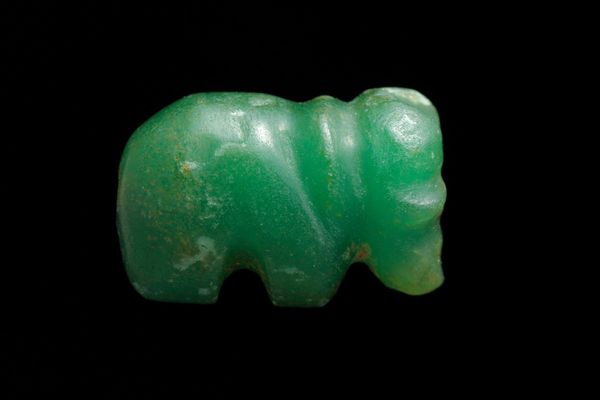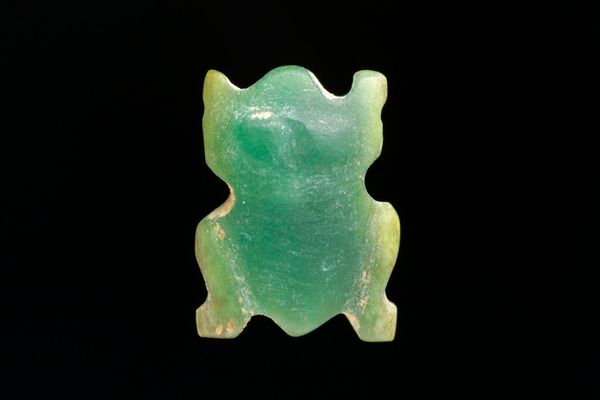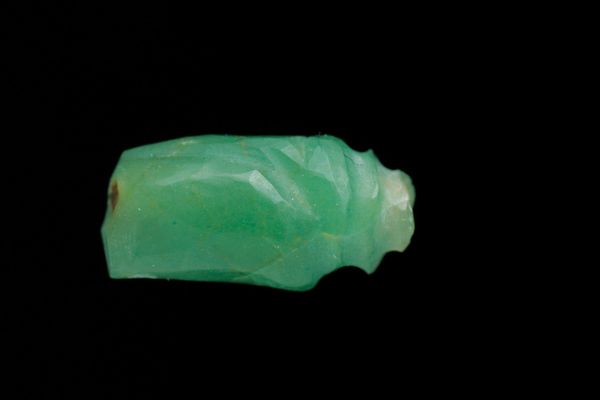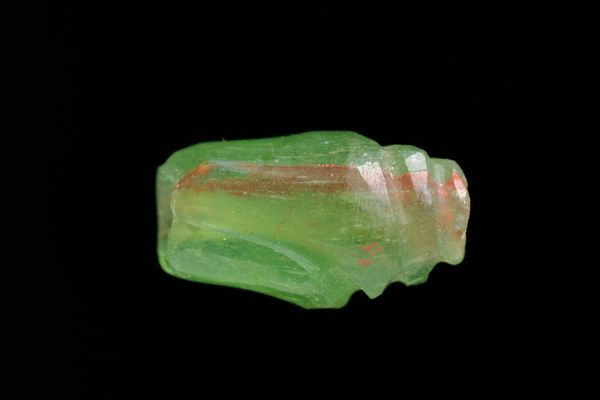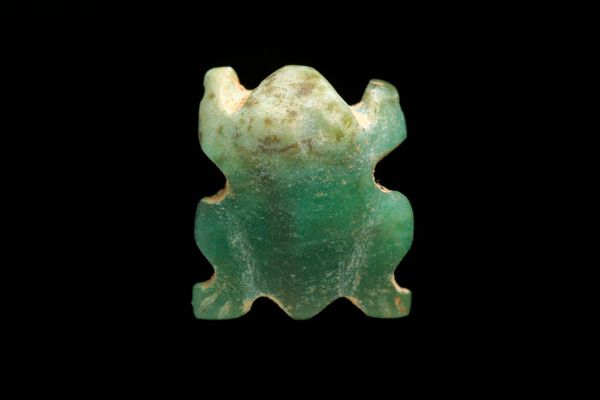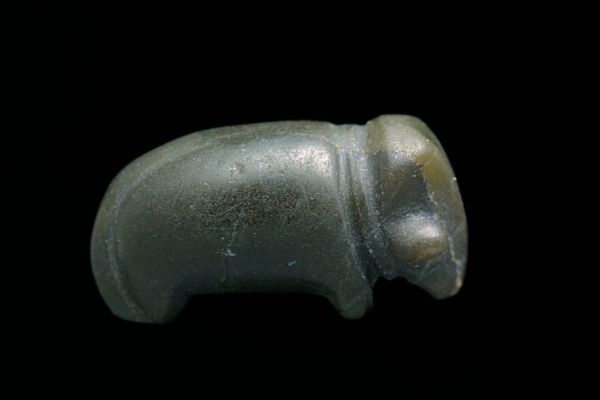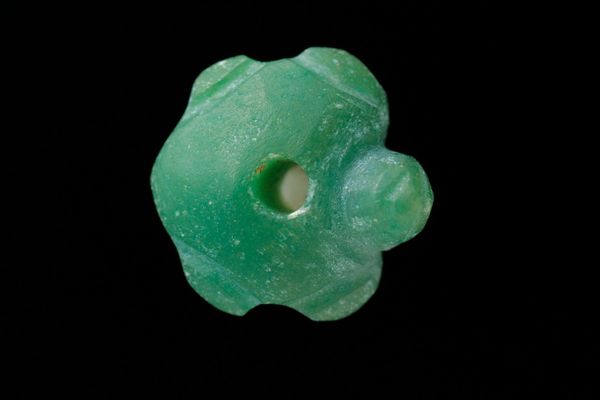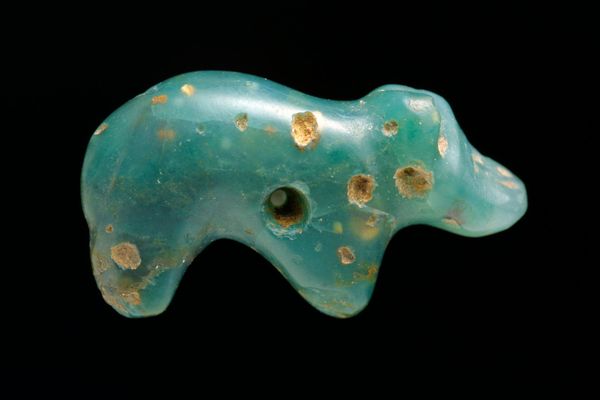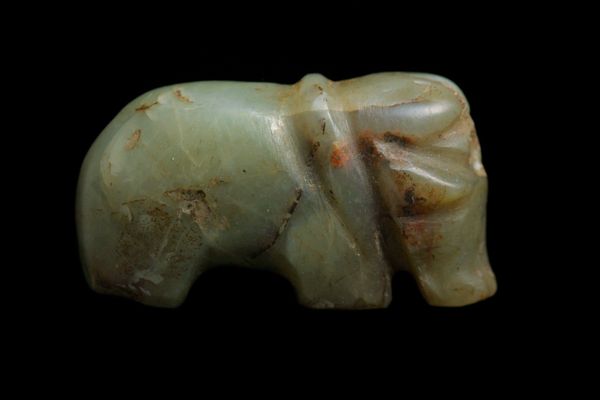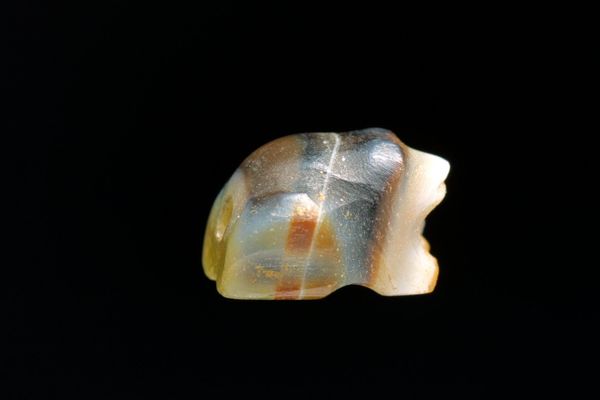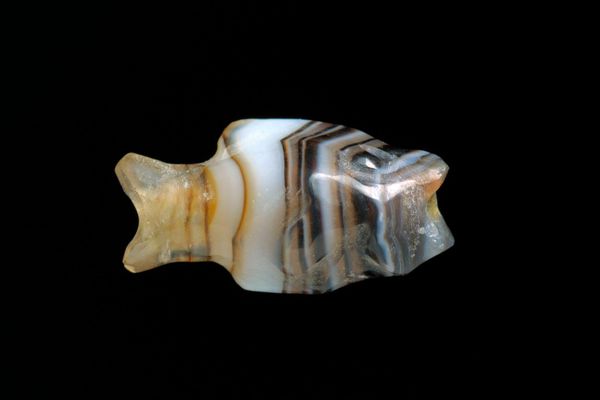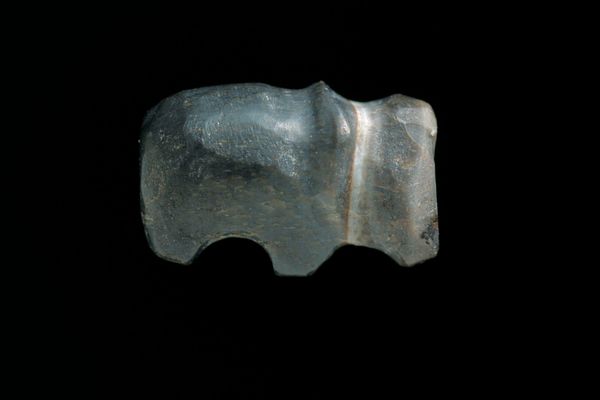
sculpture
#
sculpture
#
form
#
ancient-mediterranean
#
sculpture
#
miniature
Dimensions: 5/16 x 1/2 x 1/4 in. (0.8 x 1.3 x 0.6 cm)
Copyright: Public Domain
Curator: Let’s turn our attention to this lovely artifact, a bead carved in the shape of an elephant. Its origins are estimated to be between 501 and 800 AD. Editor: It's striking! This rich, almost luminous green against the dark backdrop. I imagine the sensation of holding it is weighty yet smooth. What was the significance of an object like this, practically speaking? Curator: Its material significance would be paramount. The green suggests jade or a similar semi-precious stone. Such a piece signifies wealth and status, particularly in regions where elephants held cultural and economic importance through trade and agriculture. The Minneapolis Institute of Art houses it. Editor: Absolutely, because crafting something like this isn't merely about aesthetics. The labour and the skill needed, from sourcing the material to the carving and polishing, all speak to a specialized, perhaps even hierarchical, society. Curator: Precisely. Elephant imagery during this period in various cultures— especially in parts of Asia—symbolized power, royalty, and divinity. To possess a miniature carving implies a connection, whether literal or aspirational, to these qualities. The object itself would play a key role in identity formation within its specific cultural environment. Editor: And given its small scale, imagine how much social performance goes into its use. It becomes part of a display – worn as a personal adornment, a marker of class perhaps or even status, deliberately showing the skill and resources behind it. What type of tool created something like this? How much time? Curator: Considering the period, likely tools made of harder stones like quartz, or even early forms of metal tools used abrasively with water. Hours, even days, might have been devoted by artisans highly skilled in their trade. Editor: So, each tiny ridge has a much broader resonance, extending to global patterns of production, usage, even disposal. You just want to hold something with that much context. Curator: Yes, its role as an object is less straightforward. Thank you for providing fresh views to the artwork. Editor: The object is an evocative case study that brings many fascinating insights and contexts.
Comments
No comments
Be the first to comment and join the conversation on the ultimate creative platform.
